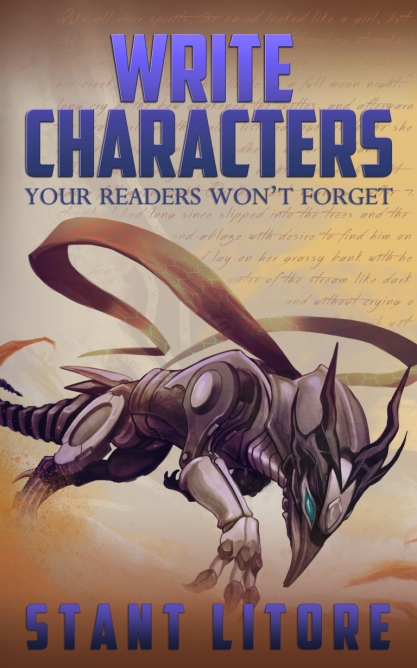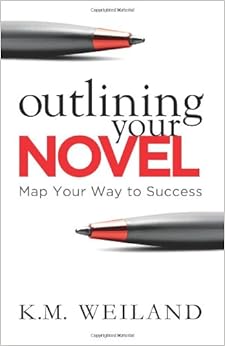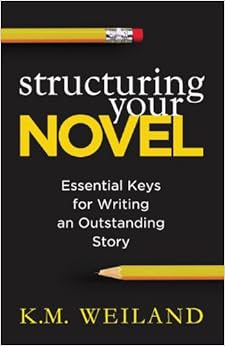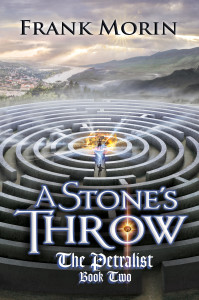Guest Post by Stant Litore

As is often the case with our characters, our own greatest strengths as writers can serve double duty as our greatest weaknesses—the very things that keep us from building momentum with a novel. For example:
Maybe You’re the Perfectionist
Perhaps your quest for perfection and excellence keeps you from churning out mediocre work but also prevents you from actually finishing a draft. Your own internal criticism chimes in too loudly while you write. If this is the case, you will need to find a few tactics for disarming your own worst critic.
Maybe for you this will mean a mantra. Or maybe you simply need a way to enter and stay in “creative space” or in the creative mood. I recommend finding a trigger—such as an object that activates your imagination, or a scene from a book that gets you thinking imaginatively, or a piece of music or kind of music—something that you can return to when it’s time to “be creative.”
To stay in that space, try headphones. I write with symphonic music playing. I have done that for so many years that now, like Pavlov’s dogs, I lock into creative space as soon as I’m alone with that music. You may need silence—in which case, consider the not insignificant investment of noise-cancelling headphones.
Give some thought also to where you write. While you can write anywhere—I have been known to scribble a scene on the back of a receipt on my car dashboard while stuck in traffic—you might also be well served by establishing a routine place that you make into a creative space, a sacred space. Just as a monk goes to a cell and stares at an image of the Virgin Mary in order to enter and remain in a state of contemplation, you might create your own space and ritual to enter and stay in a state of creativity.
It doesn’t have to be extravagant. If you have a room of your own that you can convert into a study for writing, that’s great, but for years I did all my writing on a tiny, round dining room table in a cramped dining room in a small apartment. I put the kids to bed, popped on my headphones, and had at it. Not an ideal writing space, but I did what I could to make it mine, for those few brief evening hours. A small owl statuette served for a symbolic reminder of past travels and past creative moments. The symphonic music turned on my imagination. And I took a moment to clear from my space whatever made it not right: dirty dishes, stray paperwork, etc.
Do the same with whatever space you have available: find a way to make it sacred to your writing, even if only for brief periods.
Or Maybe You’re the Artist
Maybe daily perfectionism isn’t your particular curse. Maybe for you, your love of imagination and beauty makes you hesitate at some point mid-process, because the first draft looks like a pale betrayal of your original vision for your story.
Other writing instructors have called this phenomenon “Tolstoy Syndrome,” the unspoken, subconscious belief that if your first draft doesn’t look like a masterpiece (like War and Peace), then you have failed and you should stop. Of course, Tolstoy’s own first drafts were a mess, too. A first draft is just that: a first draft. A place to start. For most writers, the real work is in revision. Accept that first drafts are awful, and do them anyway. If you never start, you’ll never finish. That sounds like a platitude, but that doesn’t mean it isn’t true.
When you get that feeling that your work is but a pale imitation of your vision, and that feeling starts to get in your way, do this: Take out a sheet of paper. Close your eyes a moment (unless you are driving, in which case go home first, and then try this; we are mad storytellers, you and I, but we needn’t be lunatics) and imagine your character mid-scene in some moment of your book that is closely connected to what you love about your story. Then open your eyes and write. “Free-write”—write without permitting your pen to leave the paper or your fingers to leave the keyboard. Free-write for ten minutes without stopping. It doesn’t matter if what you’re writing in those ten minutes is good, or even if it belongs in the story. Just write the middle of that scene that so appeals to you. I wrote an Inuit character once—twenty years ago, as a very young writer—and as I worked on his story, at intervals I would look at what I’d done and feel defeated. I suffer from Tolstoy Syndrome. To deal with that syndrome, I kept returning to a scene where my character was out on the tundra, his breath visible on the air, his face greased against the bite of the wind, his spear heavy and reassuring and solid in his hand, and the air full of the reek of caribou. I must have written that hunt twenty times. And each time I wrote it, I recovered the magic of my story, the wonder of it, the appeal that drew me to this character and his story in the first place. When you feel yourself failing your vision—because first drafts generally do exactly that, and that’s okay—find a way to step back into your vision. When you are standing in the midst of your vision, you are strongest; you are happiest. So go there for a while before you return to your actual manuscript, and write and revise from that place in your heart, from that country in your imagination. That can give you a restorative burst of energy.
This is also how you break “writer’s block”; if you’re in a place where no ideas are coming, step aside from that place for a few minutes and free-write a scene that is close to your heart. If the engine of your imagination is running cold, this is one way to heat it up!
The point is: with perseverance and discipline, you can do this. As Koach learns in The Zombie Bible, the only lasting impediments are those we shore up in our own hearts. You may have shored up some of your own. Have courage and knock them down.
This post is an excerpt from Write Characters Your Readers Won’t Forget.







